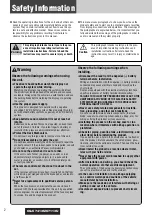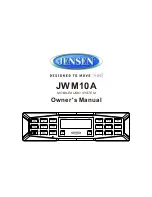
3.
Press
[B]
.
•
The multicast tree setting screen is displayed.
4.
Use
[
][
]
to select the following items for input:
"Multicast Name"
: Enter the multicast tree name (maximum 24 characters) (Page 158).
"Max. Bandwidth"
: Press
[ENTER]
and use
[
][
]
to select the maximum bandwidth to be used for the
multicast (1.0/1.2/2.0/3.0/4.0/5.0 Mbps) (default: 5.0 Mbps).
Note
•
All terminals registered to the multicast tree must have twice the available bandwidth as set in
"Max. Bandwidth"
.
•
In
"Call set up"
, the values for
"Max. Bandwidth"
,
"Max. Bandwidth Per Site"
,
"Max.
Bandwidth Per Site (LAN 1)"
, and
"Max. Bandwidth Per Site (LAN 2)"
have no effect on the
maximum bandwidth used for multicasting.
"Max. Resolution"
: Press
[ENTER]
and use
[
][
]
to select
"Full HD"
(default) or
"HD"
.
Note
•
When the bandwidth of the connection used during the multicast drops, the resolution and/or frame
rate of the multicast data may lower.
"Multicast Default Video"
: Press
[ENTER]
and use
[
][
]
to select the video to send when the multicast
starts.
–
"Main Camera"
(default): The video of the main camera is sent.
–
"Sub Camera"
: The video of the sub camera is sent.
–
"PC"
: The image of the PC is sent.
Note
•
Performing contents sharing operations can change the video being sent during a multicast
(Page 75).
"Multicast Def. Noise reduction"
: Use
[
][
]
to select whether noise reduction is enabled when the
multicast starts.
–
"ON"
(default): Noise reduction is enabled.
–
"OFF"
: Noise reduction is disabled.
"MIC detection"
: Use
[
][
]
to select the microphone status display.
–
"ON"
: Displays the microphone status.
–
"OFF"
(default): Hides the microphone status.
"IP Address"
: Input the IP address of the multicast terminal at the top of the multicast tree.
Document Version 2015-08
User Manual
149
Using Multicast
















































